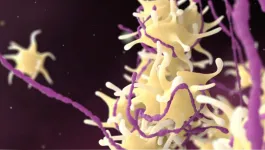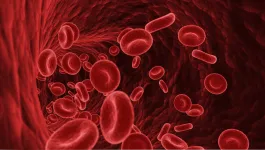TTP in pregnancy
9 min
Epidemiology of TTP in pregnancy
Hemostatic changes in normal pregnancy
- Normal ADAMTS13 activity reduces in the second and third trimester of pregnancy to protect against hemorrhage at delivery.5
- May decrease to 25–30% of normal levels.6
- Returns to pre-pregnancy levels post-natally.5
- VWF and FVIII increase in parallel during the first half of the pregnancy period, after which VWF shows a greater increase.5
Burden of TTP in pregnancy
- While ADAMTS13 activity reduces in the 2nd and 3rd trimester of a normal pregnancy, in TTP the persistent pregnancy-related increase in VWF may ‘consume’ an already severely reduced ADAMTS13 level.5
- TTP can have a serious impact on maternal and fetal outcomes:
- Presentation in the 2nd trimester is associated with the greatest risk of fetal death.1,7
- Maternal mortality is higher (26%) in women who initially present with pregnancy-onset TTP vs those with recurrent disease (11%).7
- Most cases of cTTP occur during the 2nd or 3rd trimesters of pregnancy, when an increase in plasma VWF is thought to explain the increased risk for initial cTTP presentation, acute episodes, and intrauterine fetal growth restriction.8
- Pregnancy is a common trigger for acute cTTP events and can be associated with severe complications:8
Factors associated with poor pregnancy outcomes in cTTP and iTTP
Diagnostic challenges of TTP in pregnancy
- Diagnosis of TTP during pregnancy is challenging as it may be difficult to differentiate it from other TMAs.5
- Evaluation of ADAMTS13 activity and detection of anti-ADAMTS13 antibodies is necessary for TTP subtype identification, and differentiation from other pregnancy-associated TMAs.7,14
- Features that may be able to distinguish TTP from other pregnancy-related TMAs include renal dysfunction, significantly reduced platelet counts (< 20,000/µl), fever, and fluctuating neurological symptoms.7
- Very high elevations of LDH with only moderate elevations of AST resulting in elevated LDH-to-AST ratio also suggest TTP.7
*Patients could experience more than one complication
†Includes early miscarriage (occurring < 12 weeks into pregnancy), late miscarriage (occurring ≥ 12 weeks into pregnancy), intrauterine fetal death, and still birth
Share this article with a colleague
Share this article with a colleague
This website is intended for an international audience of healthcare professionals outside of the US & UK. It should not be shared with patients, carers or the general public.
Abbreviations, Glossary and References
Abbreviations
ADAMTS13; A disintegrin and metalloproteinase with a thrombospondin motifs 13
AST; Aspartate aminotransferase
cTTP; Congential TTP
FVIII; Factor VIII
HELLP; Hemolysis, elevated liver enzymes and low platelets
iTTP; Immune-mediated TTP
LDH; Lactate dehydrogenase
PBT; Plasma-based therapy
TMA; Thrombotic microangiopathy
TTP; Thrombotic thrombocytopenic purpura
VWF; Von Willebrand factor
Glossary
ADAMTS13; ADAMTS13 (A Disintegrin And Metalloproteinase with ThromboSpondin motifs 13) is a constitutively active enzyme (plasma metalloprotease) that catalyzes the breakdown of ultra large and high molecular weight von Willebrand factor (VWF) into smaller multimers, reducing their thrombogenic potential, and maintaining hemostasis.15,16
Incidence; The rate of new cases or events over a specified period for the population at risk for a certain event.
Microangiopathic hemolytic anemia (MAHA); Process of red blood cell destruction within the microvasculature accompanied by thrombocytopenia due to platelet activation and consumption. Thrombotic thrombocytopenic purpura (TTP) and hemolytic uremic syndrome (HUS) are primary forms of thrombotic microangiopathies.17
Prevalence; The proportion of a particular population found to be affected by a medical condition at a specific time.
Schistocyte; Circulating fragments of red blood cells commonly seen in blood smears from patients with thrombotic microangiopathies including TTP.18
Thrombocytopenia; Refers to a state of reduced peripheral platelets below normal levels (150x109/L) and can be caused by a wide variety of aetiologies that either decrease platelet production or increase platelet consumption.19
Thrombotic microangiopathy (TMA); TMA includes a diverse set of syndromes that can be hereditary or acquired, which can occur in children and adults with sudden or gradual onset.
TMA syndromes, despite being diverse, have a common set of clinical and pathological features: MAHA, thrombocytopenia, organ injury, vascular damage manifested by arteriolar and capillary thrombosis with characteristic abnormalities in the endothelium and vessel wall.20
Thrombotic thrombocytopenic purpura (TTP); TTP is a type of MAHA presenting with moderate or severe thrombocytopenia. There is associated organ dysfunction, including neurologic, cardiac, gastrointestinal and renal involvement; oliguria or anuric renal failure requiring renal replacement therapy is not typically a feature. TTP is confirmed by a severe deficiency (<10%) of ADAMTS13 activity.21
von Willebrand factor (VWF); VWF plays two key roles in hemostasis: 1) in primary (platelet-mediated) hemostasis, VWF binds to collagen and platelets thus promoting platelet activation and aggregation, and 2) in secondary (coagulation factor mediated) hemostasis VWF binds factor VIII (FVIII) protecting FVIII from rapid clearance. When VWF binds to collagen following vascular injury, it releases FVIII, leading to FVIII activation and initiation of the coagulation cascade.22,23
Reference
- Beranger, N., et al., Management and follow-up of pregnancy-onset thrombotic thrombocytopenic purpura: the French experience. Blood Adv, 2024. 8(1): p. 183-193.
- Mariotte, E., et al., Epidemiology and pathophysiology of adulthood-onset thrombotic microangiopathy with severe ADAMTS13 deficiency (thrombotic thrombocytopenic purpura): a cross-sectional analysis of the French national registry for thrombotic microangiopathy. Lancet Haematol, 2016. 3(5): p. e237-245.
- Moatti-Cohen, M., et al., Unexpected frequency of Upshaw-Schulman syndrome in pregnancy-onset thrombotic thrombocytopenic purpura. Blood, 2012. 119(24): p. 5888-5897.
- Scully, M., et al., A British Society for Haematology Guideline: Diagnosis and management of thrombotic thrombocytopenic purpura and thrombotic microangiopathies. Br J Haematol, 2023. 203(4): p. 546-563.
- Thomas, M.R., S. Robinson, and M.A. Scully, How we manage thrombotic microangiopathies in pregnancy. Br J Haematol, 2016. 173(6): p. 821-830.
- Ferrari, B., et al., Pregnancy complications in acquired thrombotic thrombocytopenic purpura: a case-control study. Orphanet J Rare Dis, 2014. 9: p. 193.
- Fyfe-Brown, A., et al., Management of pregnancy-associated thrombotic thrombocytopenia purpura. AJP Rep, 2013. 3(1): p. 45-50.
- Sakai, K., et al., Success and limitations of plasma treatment in pregnant women with congenital thrombotic thrombocytopenic purpura. J Thromb Haemost, 2020. 18(11): p. 2929-2941.
- Coppo, P., et al., Pregnancy-Related Outcomes in Patients with Congenital Thrombotic Thrombocytopenic Purpura: Post Hoc Analysis of a Retrospective Chart Review Study. Blood, 2023. 142(Supplement 1): p. 1261-1261.
- Scully, M. and L. Neave, Etiology and outcomes: Thrombotic microangiopathies in pregnancy. Res Pract Thromb Haemost, 2023. 7(2): p. 100084.
- Davidesko, S., et al., von Willebrand factor antigen: a biomarker for severe pregnancy complications in women with hereditary thrombotic thrombocytopenic purpura? J Thromb Haemost, 2023. 21(6): p. 1623-1629.
- Miodownik, S., et al., Unfolding the pathophysiology of congenital thrombotic thrombocytopenic purpura in pregnancy: lessons from a cluster of familial cases. Am J Obstet Gynecol, 2021. 225(2): p. 177 e171-177 e115.
- Scully, M., et al., Thrombotic thrombocytopenic purpura and pregnancy: presentation, management, and subsequent pregnancy outcomes. Blood, 2014. 124(2): p. 211-219.
- George, J.N., C.M. Nester, and J.J. McIntosh, Syndromes of thrombotic microangiopathy associated with pregnancy. Hematology Am Soc Hematol Educ Program, 2015. 2015: p. 644-648.
- Markham-Lee, Z., N.V. Morgan, and J. Emsley, Inherited ADAMTS13 mutations associated with Thrombotic Thrombocytopenic Purpura: a short review and update. Platelets, 2023. 34(1): p. 2138306.
- Kremer Hovinga, J.A., et al., Thrombotic thrombocytopenic purpura. Nat Rev Dis Primers, 2017. 3: p. 17020.
- Arnold, D.M., C.J. Patriquin, and I. Nazy, Thrombotic microangiopathies: a general approach to diagnosis and management. CMAJ, 2017. 189(4): p. E153-E159.
- Zini, G., et al., ICSH recommendations for identification, diagnostic value, and quantitation of schistocytes. Int J Lab Hematol, 2012. 34(2): p. 107-116.
- Gauer, R.L. and M.M. Braun, Thrombocytopenia. Am Fam Physician, 2012. 85(6): p. 612-622.
- George, J.N. and C.M. Nester, Syndromes of thrombotic microangiopathy. N Engl J Med, 2014. 371(7): p. 654-666.
- Scully, M., et al., Consensus on the standardization of terminology in thrombotic thrombocytopenic purpura and related thrombotic microangiopathies. J Thromb Haemost, 2017. 15(2): p. 312-322.
- Rauch, A., et al., On the versatility of von Willebrand factor. Mediterr J Hematol Infect Dis, 2013. 5(1): p. e2013046.
- Stockschlaeder, M., R. Schneppenheim, and U. Budde, Update on von Willebrand factor multimers: focus on high-molecular-weight multimers and their role in hemostasis. Blood Coagul Fibrinolysis, 2014. 25(3): p. 206-216.



